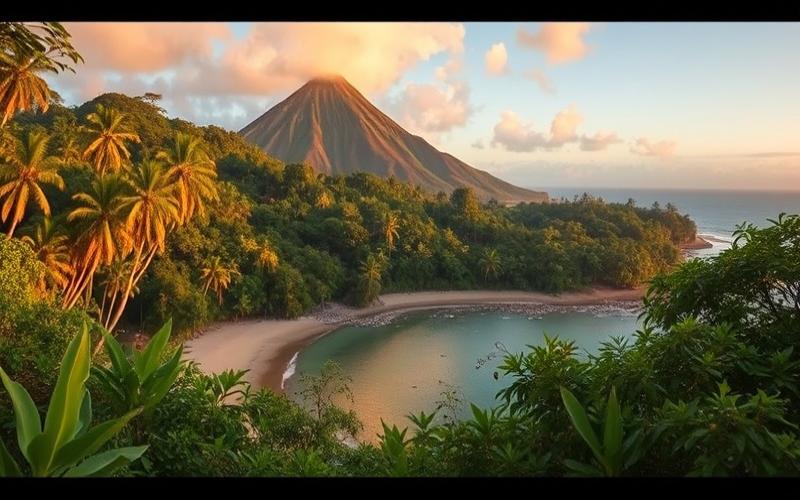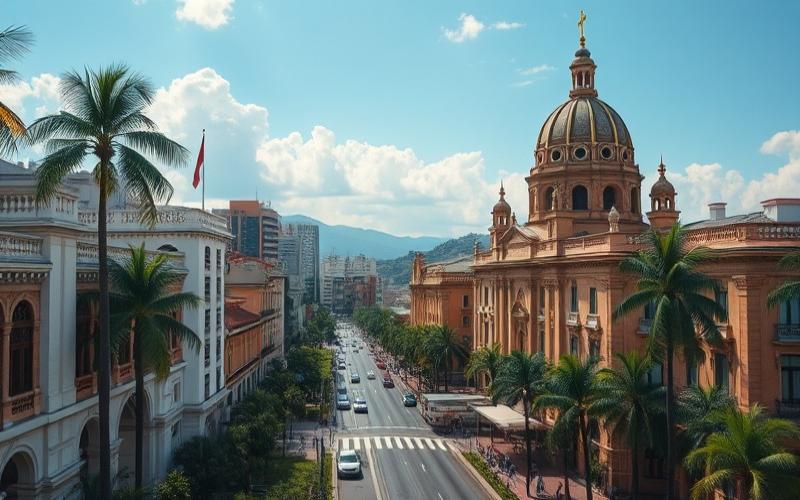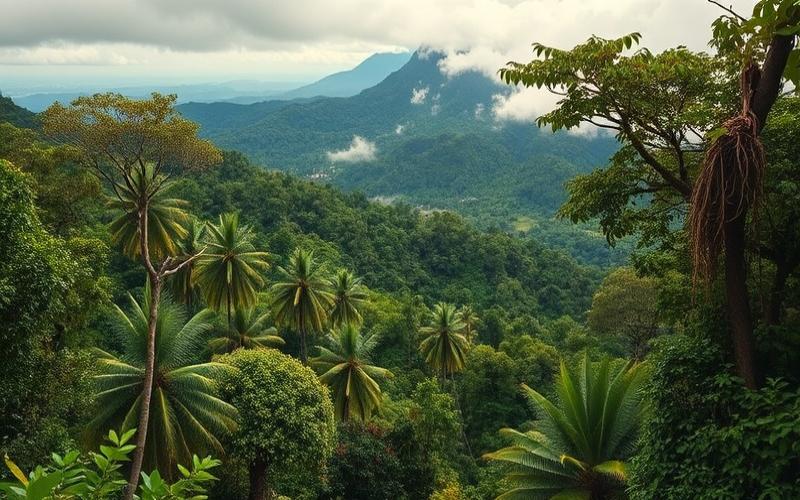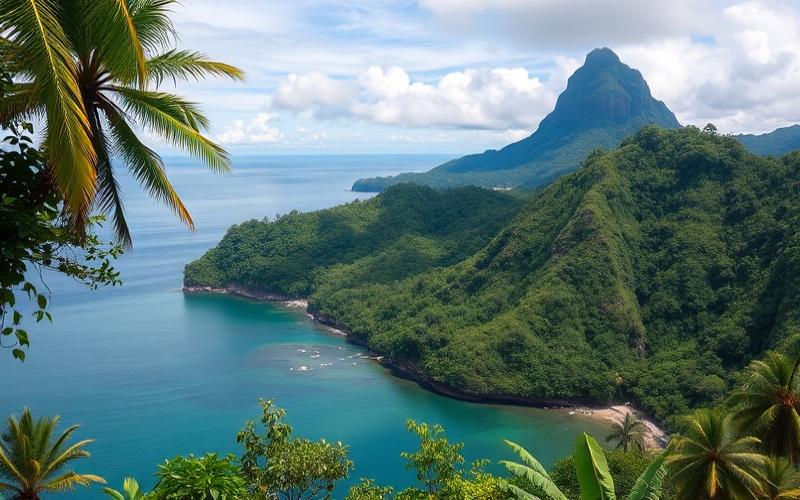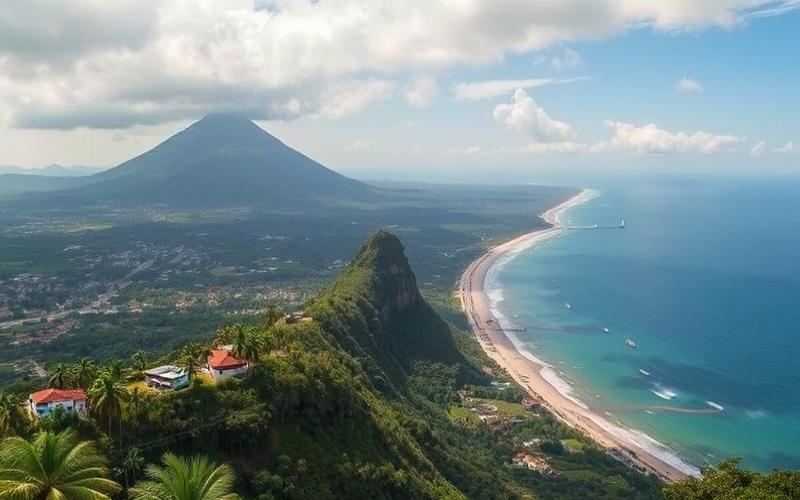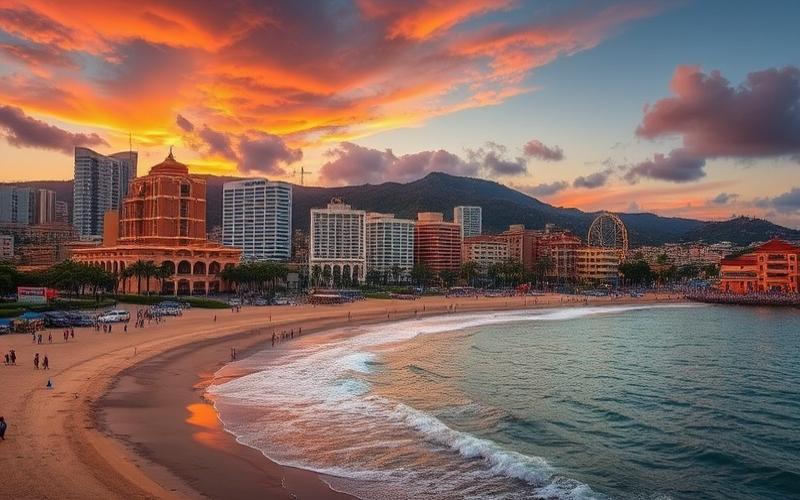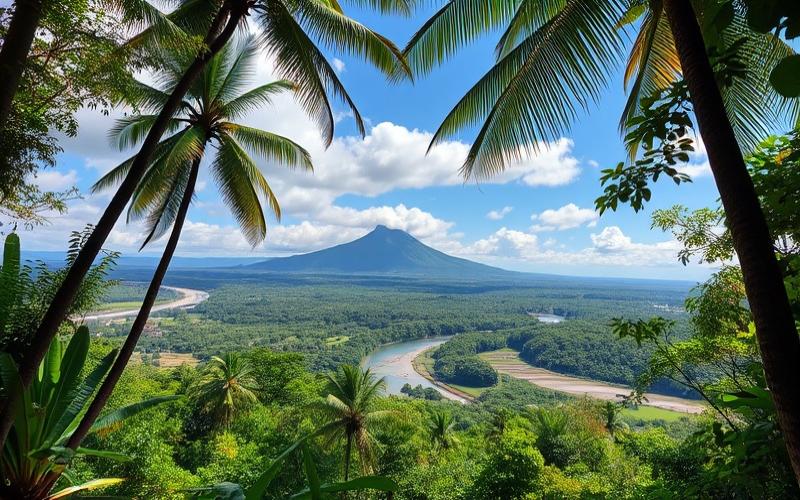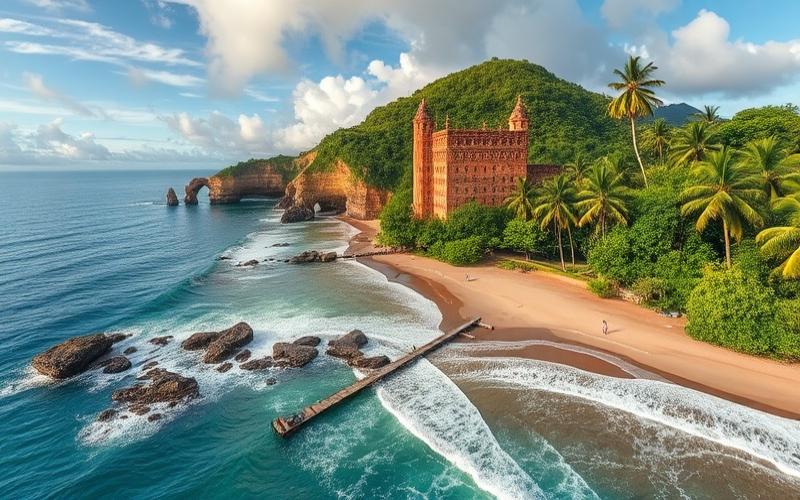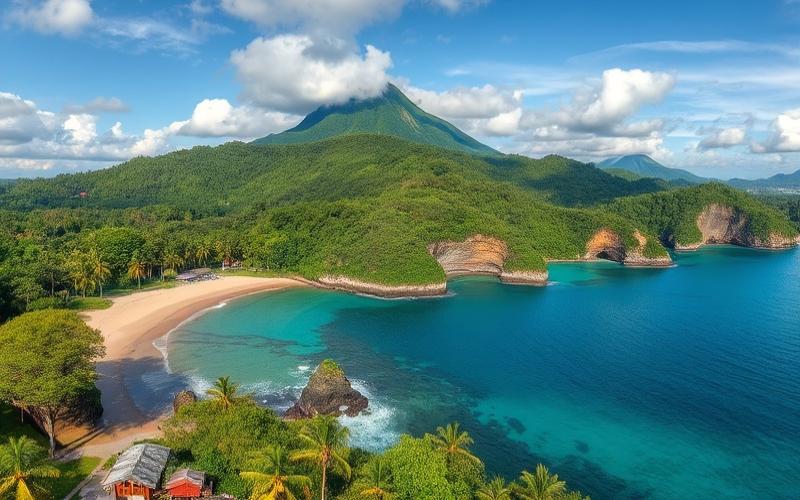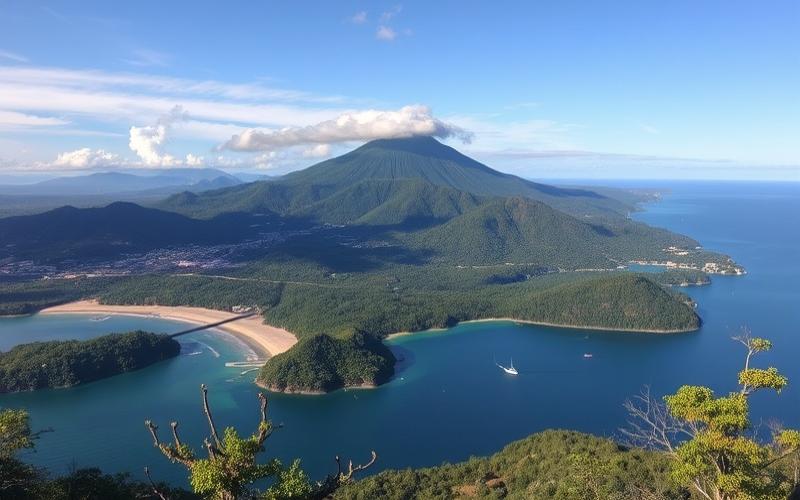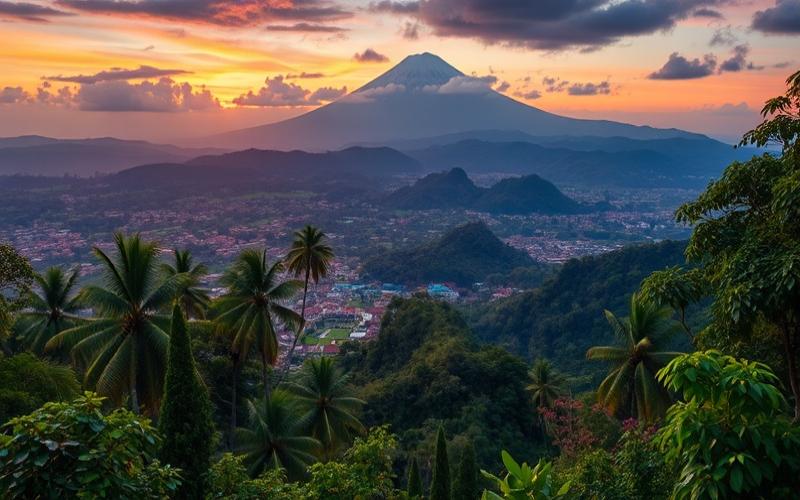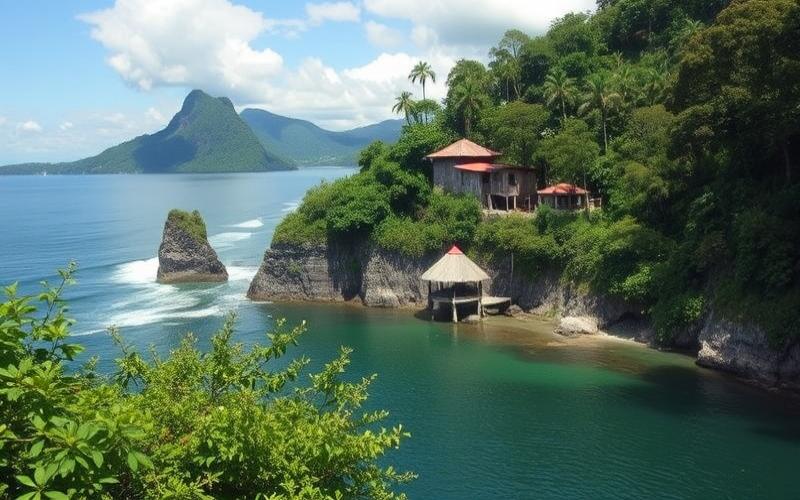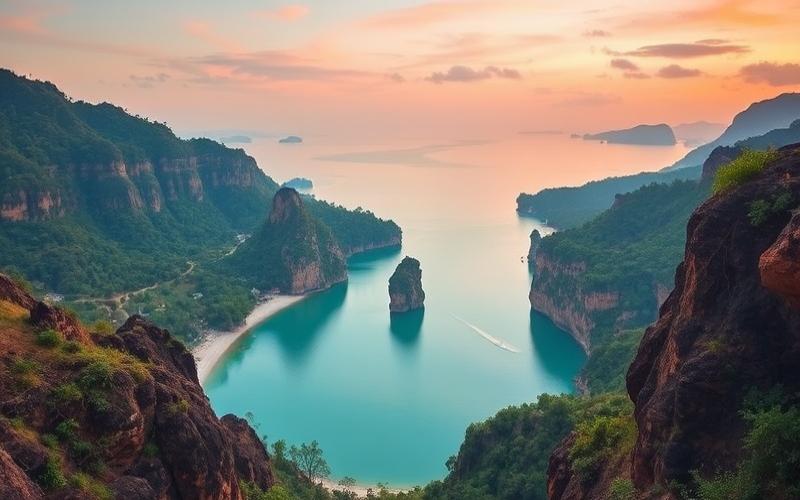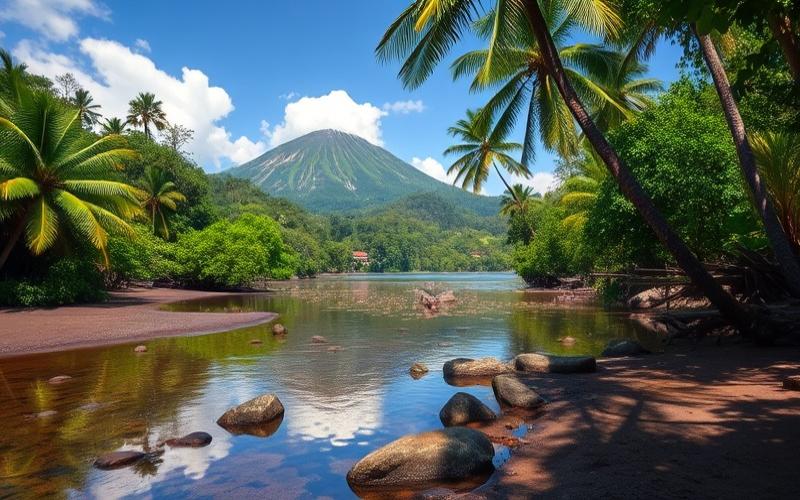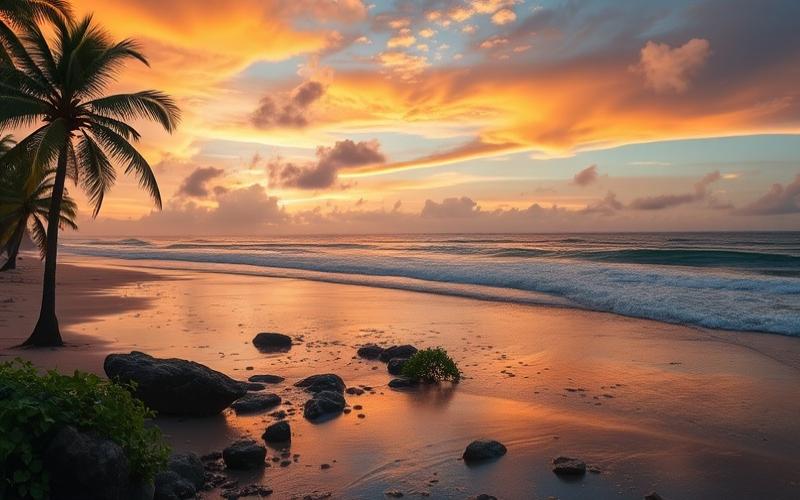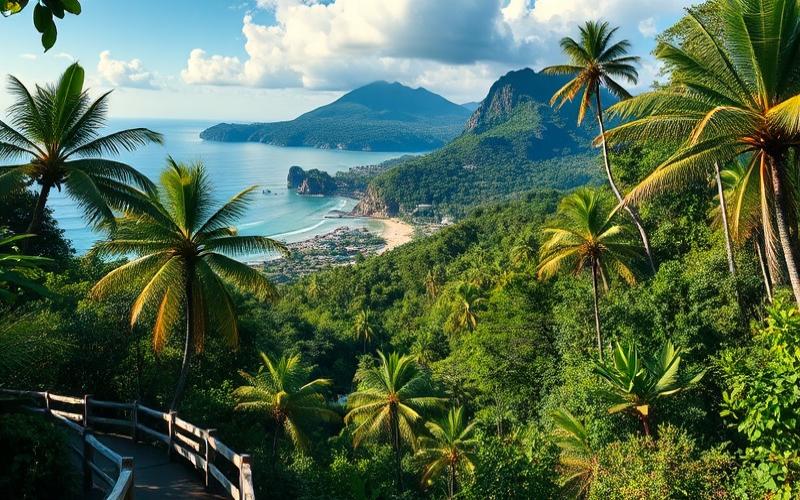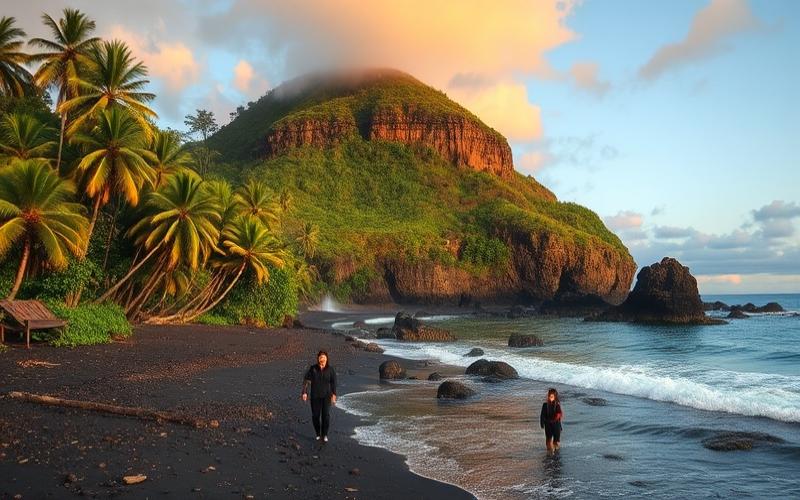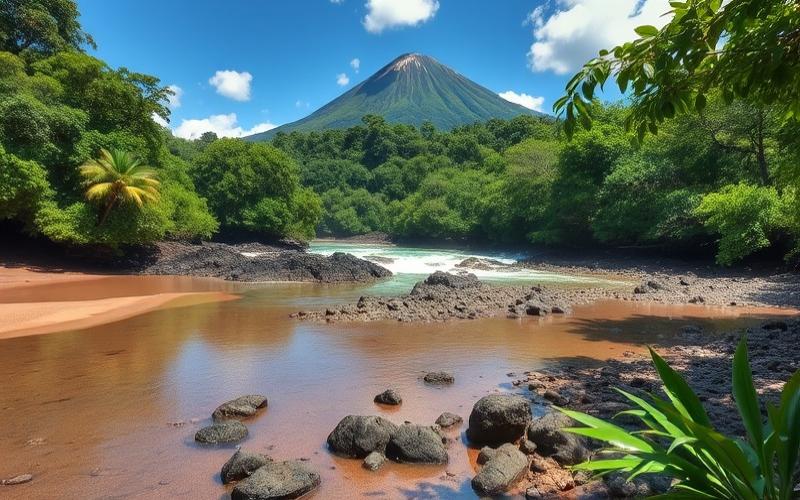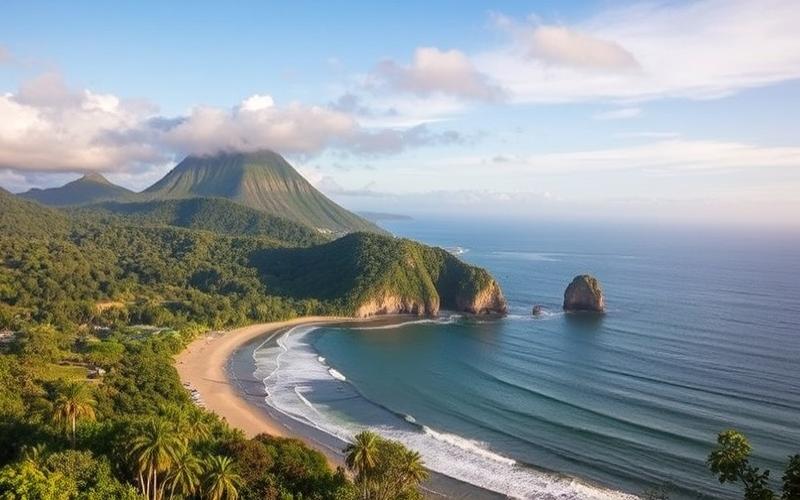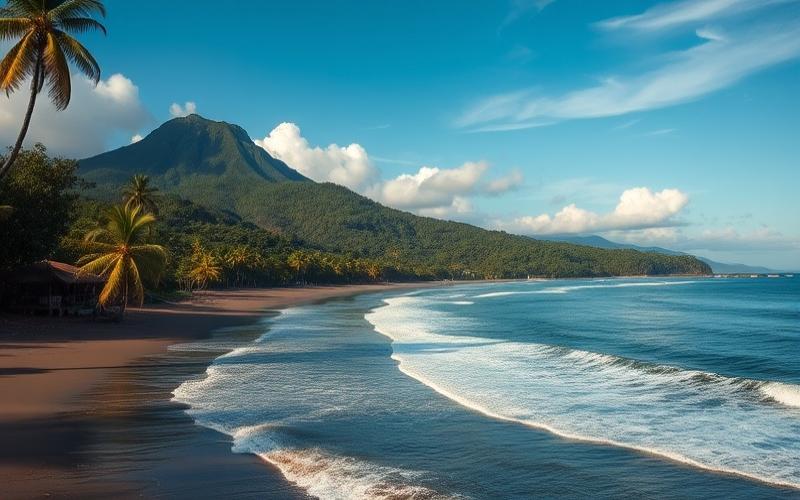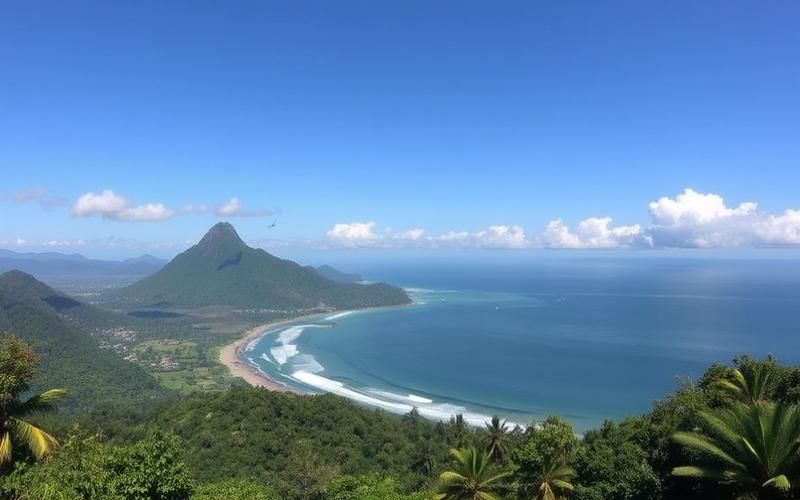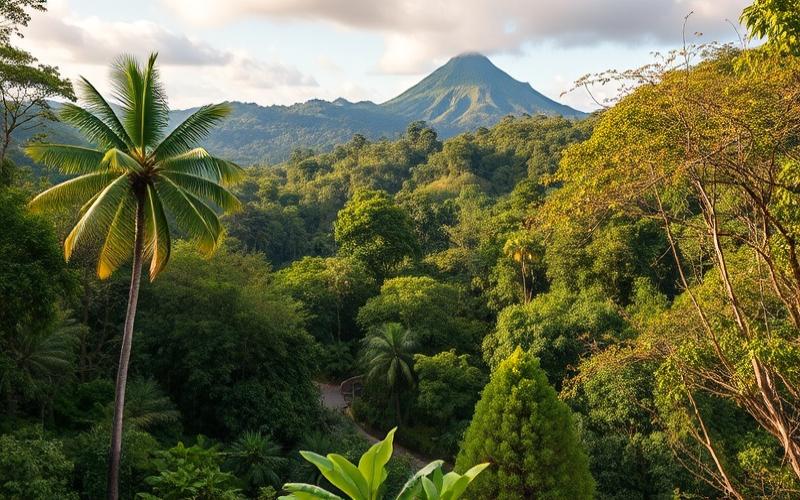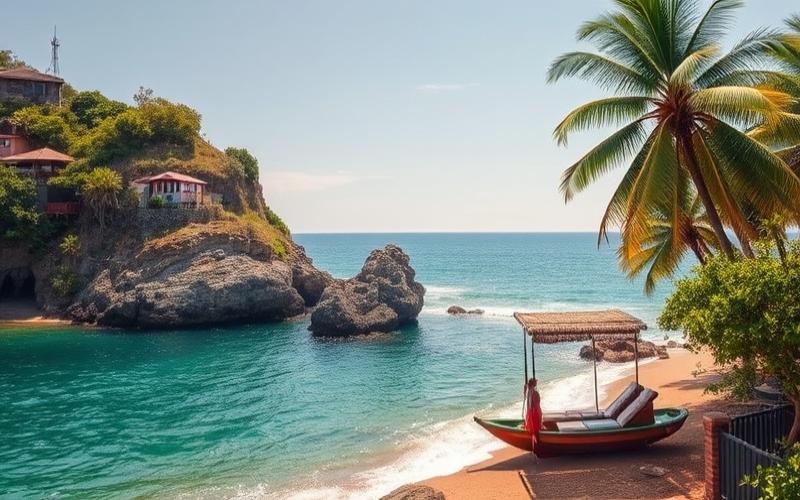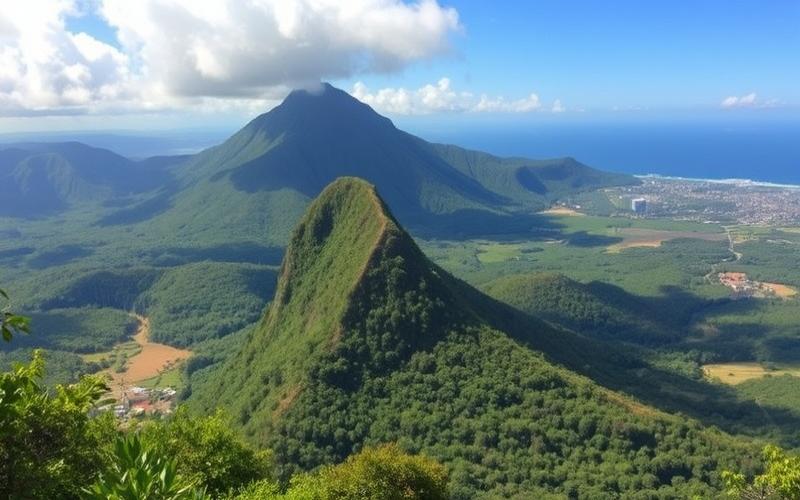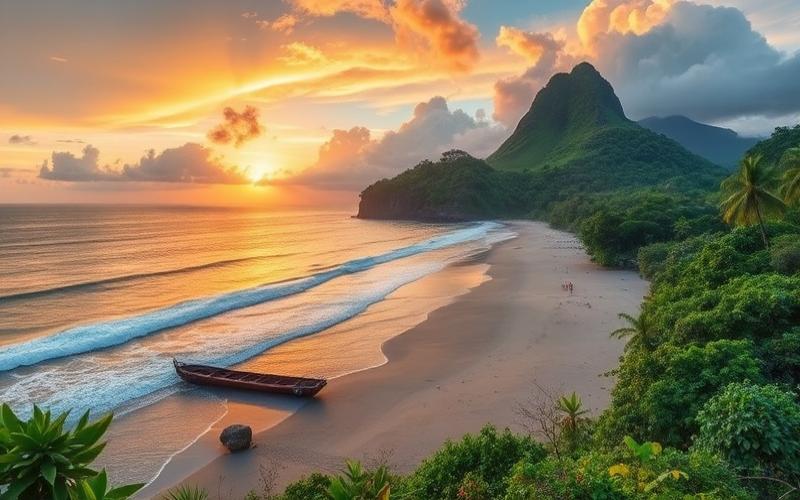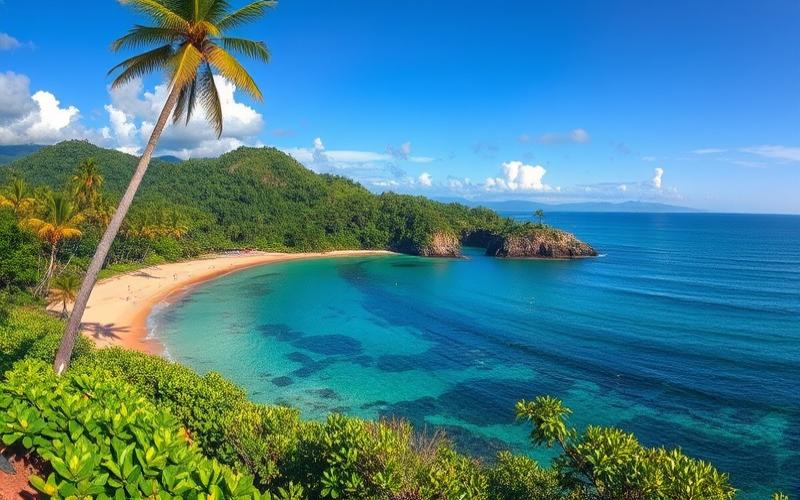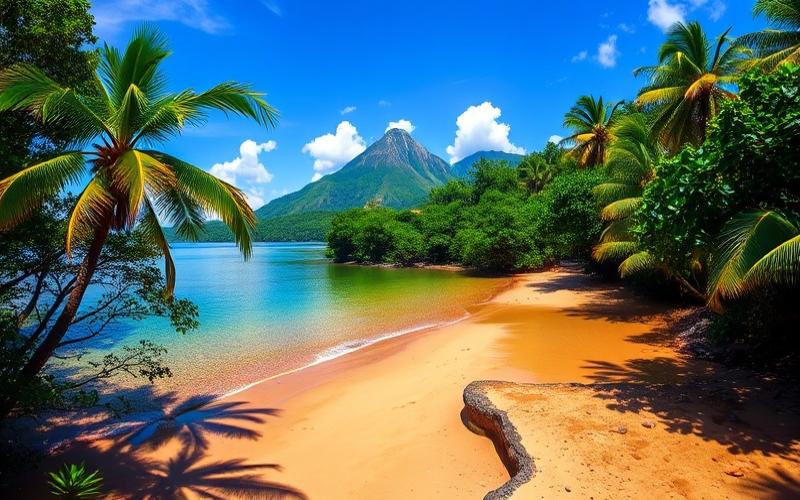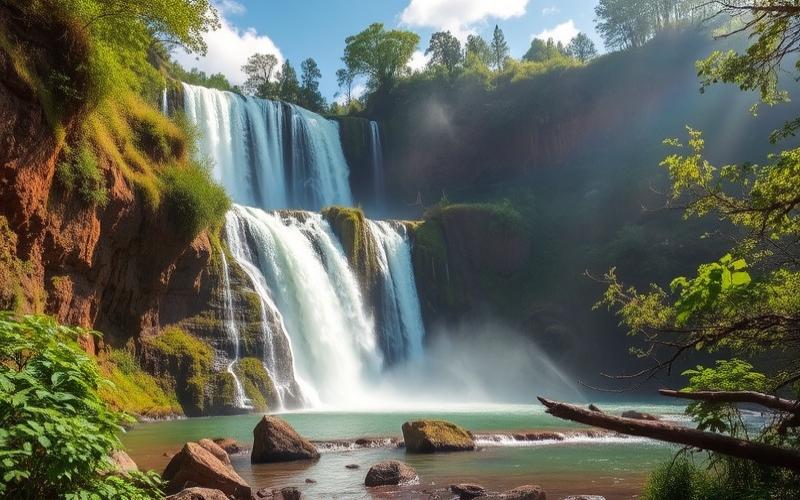
 Published on and written by Cyril Jarnias
Published on and written by Cyril Jarnias
Artist Villages in Costa Rica: Between Tradition and Innovation
Nestled in the heart of Costa Rica, artist villages represent a wonderful crossroads between tradition and innovation—spaces where art transcends mere creative acts to become economic and social drivers.
A Cultural Investment or an Economic Opportunity?
Exploring the nuances of these cultural microcosms, our article addresses the crucial question: are these artistic havens primarily an essential cultural investment for preserving and developing local traditions, or do they represent a strategic economic opportunity for a country seeking to diversify its revenue streams?
The Impact of Artist Villages on Costa Rica
Between unique cultural activities, increased tourist appeal, and the proliferation of artist residencies, discover how this phenomenon influences Costa Rica’s social and economic dynamics while exploring the delicate balance between artistic passion and profitability.
Good to Know:
Artist villages in Costa Rica attract thousands of visitors annually, significantly contributing to the local economy while preserving cultural traditions.
Evolution of Artist Villages in Costa Rica: A Cultural Investment
The history of artist villages in Costa Rica dates back to initiatives by indigenous communities and local artists seeking to preserve and enhance their cultural heritage in the face of modernization and economic evolution. Beginning in the 1960s-1970s, with new infrastructure development and tourism growth, villages like Boruca and Guaitil saw their economies transform from agriculture to crafts and art, often in response to poverty and the need to preserve endangered traditions.
Origins and History:
- Villages such as Boruca (renowned for carved masks and weavers) and Guaitil (center of Chorotega pottery) showcase centuries-old craft traditions passed down through generations.
- The country’s opening to tourism and support from organizations like the Peace Corps fostered new ideas and appreciation for local art, enabling these communities to diversify their income sources.
Cultural Policies and Institutional Support:
- The Costa Rican government and various cultural organizations supported preserving traditional skills by providing resources (documentation of historical pieces, logistical support) and promoting national recognition of these practices.
- The establishment of artistic centers, like the Center for Creative Arts in Santa Ana, created hubs for training, exhibition, and dissemination.
Flagship Projects and Notable Initiatives:
- The Fiesta de los Diablitos in Boruca, which attracts tourists and Costa Ricans annually, plays a central role in transmitting and recognizing indigenous heritage.
- In Guaitil, the faithful reproduction of pre-Columbian pottery, encouraged by access to official photographs, helps preserve a unique identity and attracts visitors seeking authenticity.
Impact on the Local and National Art Scene:
These villages have fostered the emergence of a distinctly Costa Rican art scene, inspired by local landscapes, wildlife, and myths, as seen in works by painters like Victor Chavarria Venegas or the Nueva Sensibilidad group. They serve as living showcases of heritage and promote the dissemination of Costa Rican art internationally.
Community and Artist Involvement:
- Village management relies on strong community participation: for example, most Boruca residents are now artisans involved in organizing festivals, artistic production, and welcoming visitors.
- Artists also drive promotion, leading workshops and exhibitions, and participating in cultural space governance.
Cultural Benefits vs. Economic Gains:
| Cultural Benefits | Economic Gains |
|---|---|
| Preservation of languages and knowledge | Tourism revenue |
| Renewed identity pride | Local job creation |
| Intergenerational transmission | Resource diversification |
| National artistic influence | Micro-enterprise development |
Adaptation to Social and Technological Changes:
- Villages have adapted by integrating modern promotion techniques (tourist workshops, online sales, digital documentation of works).
- Craftsmanship has sometimes modernized in patterns or materials while remaining faithful to traditions.
- Collaborations with contemporary artists or architects have expanded cultural offerings and attracted new audiences.
Sustainability and Prosperity:
Despite persistent challenges (tourism seasonality, folklorization risks, economic pressures), these villages have generally maintained vitality by combining cultural preservation with economic innovation. Their model now inspires other initiatives in Costa Rica and actively enhances the country’s profile as a cultural destination.
Key Takeaways:
- Artist villages in Costa Rica are both heritage guardians and cultural innovation laboratories.
- Their success relies on balancing community engagement, institutional support, and adaptation to societal and technological changes.
Good to Know:
Costa Rica’s artist villages, originally inspired by European models, emerged in the 1980s through local initiatives and cultural grants aimed at fostering collective art. Supported by policies promoting artistic creation, these spaces flourished significantly, with flagship projects like the San Ramón School of Painting and the Santa Ana festival enhancing the country’s international art scene visibility. Active community and artist involvement in management has been crucial for promoting cultural exchanges and valuing local talent. By leveraging new technologies, these villages have adapted to social changes, increasing accessibility and public engagement. Although their economic impact remains modest compared to their cultural contribution, the villages have prospered by strengthening the cultural fabric and enriching the national artistic heritage, creating a balance between cultural development and economic profitability.
The Impact of Artistic Communities on the Real Estate Market
Artistic communities play a crucial role in revitalizing the local real estate market in Costa Rica. Their presence attracts new visitors, stimulates investment, and transforms villages into sought-after cultural destinations.
Main Reasons for Artistic Communities’ Impact on Real Estate:
- Increased Cultural Appeal: The presence of artists and studios makes a village more vibrant and unique, attracting tourists, expatriates, and investors seeking authenticity and creativity.
- Economic Dynamism: Cultural events, exhibitions, and art markets generate visitor flows that benefit the local economy (restaurants, accommodations, shops).
- Property Value Appreciation: The positive image associated with art increases real estate demand, especially for secondary or luxury residences, driving prices upward.
- Improved Quality of Life: Artistic initiatives promote public space renovation, creation of meeting places, and development of attractive infrastructure for newcomers.
| Attractiveness Factor | Impact on Real Estate | Costa Rican Example |
|---|---|---|
| Presence of artist studios | Increased demand and prices | Dominical, Puntarenas |
| Festivals and exhibitions | Heightened buyer interest | San José (artistic neighborhoods) |
| Heritage enhancement | Creation of high-value neighborhoods | Santa Teresa, Guanacaste |
| Cultural diversity | Influx of international profiles | Nosara, Nicoya Peninsula |
Concrete Examples of Artist Villages in Costa Rica:
- Dominical (Puntarenas): The art scene here is particularly dynamic, with galleries, workshops, and numerous local and international artists. This vibrancy attracts clients seeking a creative and ecological lifestyle, contributing to rising real estate prices and transforming the village into a sought-after destination for vacation or retirement homes.
- San José (neighborhoods like Escalante): These urban areas have seen an influx of artists and cultural collectives that transformed previously unattractive neighborhoods. Real estate has significantly appreciated, driven by the opening of galleries, cafes, and coworking spaces.
- Santa Teresa & Nosara: These coastal villages, known for their bohemian atmosphere and cosmopolitan artistic community, now attract international investors and expatriates, leading to soaring prices and construction of high-end properties.
Effects on Prices and Buyer Interest:
- Notable Price Increases: The arrival of artists and a village’s artistic reputation stimulate demand, especially for character properties, renovated homes, or those with creative potential.
- Diversified Clientele: These villages attract both local and foreign investors, drawn by cultural offerings and quality of life.
- Market Transformation: The real estate market evolves toward atypical properties, lofts, studio homes, and eco-residences aligned with the artistic and environmental sensibilities of new residents.
Challenges and Tensions: Authenticity vs. Commercialization
Challenges:
- Risk of gentrification, with increased living costs and marginalization of long-term residents.
- Threat to cultural authenticity: excessive commercialization of local art can diminish diversity and originality of creations.
- Real estate pressure on natural spaces and infrastructure, especially in small coastal villages.
Opportunities:
- Renovation and enhancement of built heritage.
- Job creation and local economic revitalization.
- International recognition for artists and villages, fostering quality cultural tourism.
Key Issues to Monitor:
- Preserve balance between economic development and respect for local identity.
- Encourage community participation in artistic and real estate projects.
- Promote sustainable and inclusive development policies.
Example of Dynamics Observed in Dominical:
“The integration of art and culture has transformed Dominical into a sought-after destination for both art enthusiasts and real estate investors, with steadily increasing property values and diversified residential offerings.”
Important Text:
The presence of artistic communities in Costa Rica is a powerful driver of territorial, economic, and cultural transformation. It creates new opportunities but requires careful management to preserve the authenticity and social balance of affected villages.
Good to Know:
Artistic communities significantly impact the local real estate market in Costa Rica by transforming modest villages into attractive cultural hubs. For example, Sarchí village, renowned for its furniture craftsmanship and painted oxcarts, has become a popular destination, stimulating buyer interest and increasing real estate prices. Santa Teresa, once a fishing village, is now a must-visit destination for art and surf enthusiasts due to the establishment of artists and workshops. However, this growing popularity can create tensions between cultural authenticity and commercialization, raising challenges for preserving local traditions while leveraging new economic opportunities. The key lies in balancing buyer attraction with maintaining artistic and cultural essence, requiring thoughtful urban planning and active collaboration among artists, communities, and local authorities.
Renovate and Transform: Costa Rica’s Art Farms
Costa Rica’s art farms represent a recent phenomenon born from converting traditional agricultural properties into creative, exhibition, and artistic transmission spaces. Originally dedicated to agricultural production (coffee, sugarcane, livestock), these farms faced economic decline due to modernization or primary sector crises.
Transformation Process and Required Investments:
- Selection of historic farms for architectural potential or heritage value.
- Building renovations, often preserving original materials (wood, stone, adobe) to maintain authenticity.
- Creation of workshops, galleries, artist residencies, and sometimes public reception areas (cafes, sculpture gardens).
- Significant investments in restoration, compliance upgrades, artistic equipment purchases, and communication.
- Financial support sometimes provided by patrons, cultural foundations, or public-private partnerships.
Collaborations and Tradition Preservation:
- Direct involvement of Costa Rican and international artists, in residence or invited for specific projects.
- Partnerships with local artisans (potters, weavers, wood carvers, blacksmiths) to value and transmit traditional skills.
- Organization of open workshops, festivals, collective exhibitions, and educational events involving the community.
- Promotion of ancestral techniques (Chorotega pottery, Bribri textiles, stone carving) while integrating contemporary practices.
Contribution to Artistic Development and Cultural Preservation:
- Intergenerational knowledge transmission through educational programs.
- Creation of networks among artists, artisans, and national cultural institutions.
- Diversification of cultural offerings outside urban centers, promoting art access in rural areas.
- Preservation of built and intangible heritage through place and tradition valorization.
Economic and Social Impact on Local Communities:
- Creation of direct (restoration, cultural mediation, animation, management) and indirect (accommodation, dining, local crafts) jobs.
- Development of cultural tourism, generating new revenue for surrounding villages.
- Strengthening social fabric through community participation in artistic projects.
- Profitability factors: ticket sales, artwork sales, event organization, school group and seminar hosting, visitor accommodations.
| Impact | Description |
|---|---|
| Jobs | Mediators, guides, artisans, maintenance staff |
| Cultural Tourism | Increased attractiveness, extended regional stays |
| Local Value Enhancement | Promotion of local products and skills (gastronomy, crafts) |
| Social Cohesion | Meeting spaces, intergenerational projects |
Concrete Examples and Challenges Faced:
- Museo Islita (Nicoya Peninsula): Former farm transformed into an open-air contemporary art museum, involving the local community in creating murals, sculptures, and installations. Recognized success for social integration and village revitalization, but facing need for regular funding to maintain outdoor artworks.
- San Vicente de Nicoya Pottery Eco-museum: Exemplary collaboration with Chorotega artisans to preserve pottery tradition. Educational and tourism success, but challenges related to large-scale commercialization and competition from industrialized products.
- La Carolina Farm (Alajuela province): Renovation of a coffee hacienda into artistic residency space and cultural center, fostering exchange between Costa Rican and foreign artists. Challenges: maintaining profitability off-season and balancing public access with resident tranquility preservation.
Key Takeaways:
- Art farms play a driving role in heritage preservation and contemporary creation stimulation.
- Their success depends on balancing initial investments, community involvement, and sustainable revenue generation capacity.
- These initiatives are powerful local development levers but remain fragile facing economic and climate uncertainties and constant need for artistic renewal.
Thus, Costa Rica’s art farms embody an innovative model where tradition, creation, and rural development combine to shape a culturally rich and economically viable future.
Good to Know:
Many art farms in Costa Rica have been transformed from traditional rural structures, requiring significant renovation investments to integrate modern workshops while preserving ancient architecture. This transformation has often been achieved through close collaborations between artists and local artisans, fostering dialogue between contemporary techniques and ancestral skills. For example, Finca La Isla art farm not only rehabilitated spaces for artist residencies but also stimulated initiatives to maintain traditional crafts like woodworking or pottery. These farms have thus contributed to revitalizing cultural heritage while creating economic dynamism, attracting tourists and collectors. The success of projects like Casa de Arte makes them models of beneficial intervention for the local economy, although others, like El Castillo farm, still face financial challenges due to high operational costs. These places are seen not only as creativity centers but also as economic development hubs, bringing jobs and promoting cultural tourism in often remote regions.
Creative Eco-Villages: A Profitable and Sustainable Model?
Eco-villages designed for artists in Costa Rica embody a synthesis between creativity and sustainability, offering environments where artistic expression flourishes within an environmentally respectful and economically viable framework.
Environmental Aspects
- Use of ecological materials:
- Construction from local, sustainable materials (certified wood, earth, bamboo).
- Preservation of tree cover and reforestation of cleared areas, as at Yoko Village.
- Rainwater harvesting, greywater reuse, and wastewater treatment practices.
- Promotion of permaculture and agroforestry for food self-sufficiency and biodiversity.
- Carbon footprint reduction through renewable energy integration and elimination of single-use plastics.
Economic Aspects
- Economic model based on resource sharing (common spaces, shared gardens, collaborative workshops).
- Appeal to international and local artists, generating new financial flows through residency space rentals, artwork sales, and cultural event organization.
- Positive impact on local economy: job creation (construction, agriculture, services), stimulation of local crafts and creative tourism.
- Concrete examples:
- At Tierramor and Eterna, welcoming new members contributes to infrastructure funding and regional economic vitality.
- Yoko Village attracts creative entrepreneurs and artists, dynamizing local real estate market and surrounding businesses.
Artist Testimonials
A Mauser EcoHouse resident testifies:
“Working in a studio open to the jungle, using natural materials found on site, nourishes my artistic practice and inspires me daily. Collaborating with other artists and integrating into village life provides a true sense of community.”
An artist living at Yoko Village notes:
“Respect for nature and the emphasis on sustainability don’t limit creativity—they amplify it. Here, I can experiment with new materials while making a living from my art.”
Comparison with Traditional Artist Villages
| Criterion | Creative Eco-Villages (Costa Rica) | Traditional Artist Villages |
|---|---|---|
| Construction Materials | Ecological, local, renewable | Conventional, sometimes imported |
| Environmental Practices | Permaculture, renewable energy | Little or no integration |
| Funding | Shared, participatory | Often individual or institutional |
| Local Economic Impact | Strong, revenue localization | Limited, depends on attendance |
| Cultural Dynamics | International openness, innovation | Heritage, tradition |
| Long-Term Viability | High (resilience, autonomy) | Variable, depends on art market |
Perceived Advantages
- For Artists: Inspiring environment, reduced living costs through food self-production, access to collaborative workspaces and a close-knit community.
- For Local Economy: Activity diversification, valorization of local skills, increased tourist appeal.
Thus, Costa Rica’s artistic eco-villages illustrate a model where profitability, sustainability, and creation mutually reinforce each other, offering a credible and resilient alternative to more traditional models.
Good to Know:
In Costa Rica, creative eco-villages represent an innovative and sustainable approach for artist communities, combining environmental respect and economic profitability. These villages integrate ecological materials like bamboo and recycled wood in construction, promoting a reduced carbon footprint. Financially, these eco-villages stimulate the local economy by attracting artists from diverse backgrounds, thereby increasing visibility and opportunities for local businesses. For example, San Miguel artist village residents reported significant reductions in housing and energy costs through sustainable practices like rainwater harvesting and solar panel use. Compared to traditional artist villages, these eco-villages offer a more economically viable and culturally enriching environment, embodying a model where creativity and sustainability mutually reinforce each other, bringing tangible benefits for both residents and their surroundings.
Disclaimer: The information provided on this website is for informational purposes only and does not constitute financial, legal, or professional advice. We encourage you to consult qualified experts before making any investment, real estate, or expatriation decisions. Although we strive to maintain up-to-date and accurate information, we do not guarantee the completeness, accuracy, or timeliness of the proposed content. As investment and expatriation involve risks, we disclaim any liability for potential losses or damages arising from the use of this site. Your use of this site confirms your acceptance of these terms and your understanding of the associated risks.


